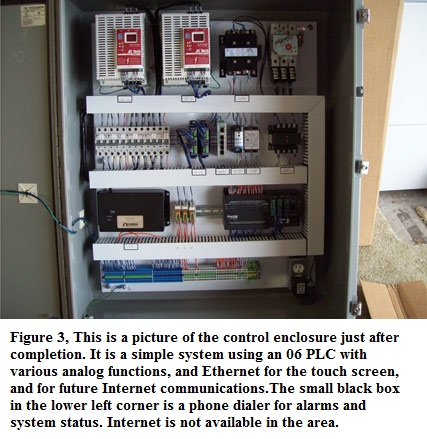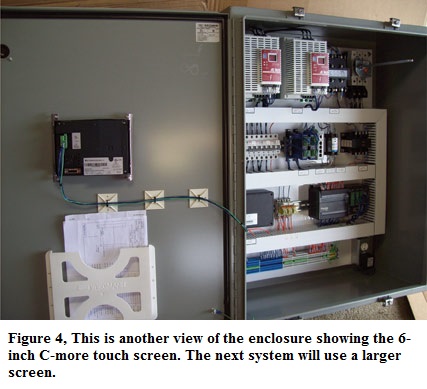Natural gas can come from wells specifically drilled to reach gas trapped in pockets beneath the surface of the Earth. These wells produce huge quantities of gas which can be piped directly to distribution centers and then on to consumers. Some wells produce a lower-quality gas which has to be processed to remove unwanted components before it can be sent to the distribution center. This separation process can be expensive, and is therefore only used on mass-producing wells where the cost can be justified.
More On Natural Gas
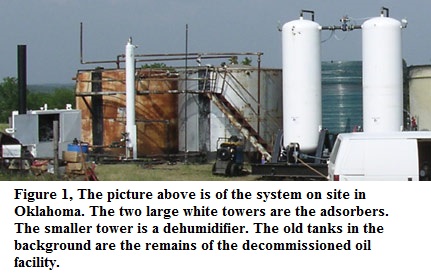 But that is not the only viable source of useable natural gas; thousands of exploratory and low-yield oil wells have been drilled over the years. Once the “cheap” oil is extracted, these wells are typically capped off, becoming a statistic on a map. Even good oil wells, once they are “used up,” are often capped. However, they are not forgotten.
But that is not the only viable source of useable natural gas; thousands of exploratory and low-yield oil wells have been drilled over the years. Once the “cheap” oil is extracted, these wells are typically capped off, becoming a statistic on a map. Even good oil wells, once they are “used up,” are often capped. However, they are not forgotten.
Many of these now-unused oil wells contain natural gas. The quantity and/or quality of the product from these wells may be too low to be commercially viable by conventional means, but one oil company recognized a need to turn these wells into valuable energy sources for America.
To extract useable natural gas from these wells, this company used a technology that has been known and applied to many processes: Adsorption. In this process, molecules “stick” to a media, forming a film of the molecules. This is not to be confused with the Absorption process in which molecules are actually drawn INTO the surface of the media. Both processes are helpful in thousands of applications, using solids and liquids to purify products.
The company chose to use granular carbon as their adsorption media because of its natural affinity for hydrocarbons. The carbon is contained within a steel pressure vessel. A pair of these pressure vessels allows the system to alternate between the Adsorption and Desorption portions of the cycle.
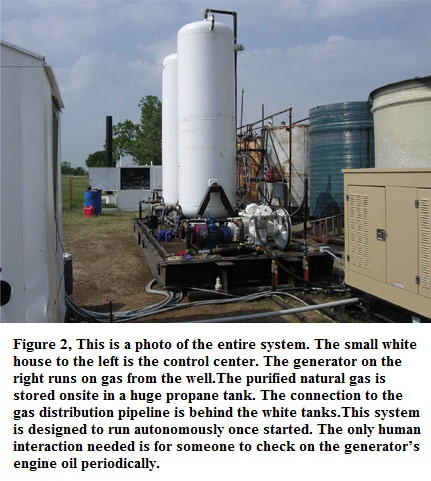
One vessel is connected to the well and gas is allowed in under pressure, while at the same time the other vessel is evacuated. The carbon in the vessel connected to the well attracts methane and other hydrocarbons, while ignoring nitrogen and other non-hydrocarbon gases. Once the media is saturated with molecules, the vessel is disconnected from the well and placed under a vacuum. During this process, the other vessel is connected to the well to take its turn at adsorbing methane.
Placing the vessel under vacuum “de-sorbs” the hydrocarbon molecules from the granulated carbon, which are then pumped to a temporary storage tank. This cycle of adsorption and desorption can occur thousands of times before the granulated carbon needs to be replaced. The purified natural gas is stored onsite in a huge propane tank.
Any hydrocarbon molecules that are not adsorbed are flared off by a small pilot flame to keep them from escaping and becoming greenhouse gases.
The company built a demonstration plant to test their theory and ran it manually until they had what they considered to be a commercially viable process. It was at this point that they turned to AutomationDirect to help them find a company to automate a larger adsorption plant. From AutomationDirect’s list of system integrators, Expert Automation Design Inc (EAD) of Seminole, Florida, answered that call.
The oil company needed a repeatable sequence of operation, with parameters they could adjust as they improved the process. EAD developed a simple system using a DirectLOGIC DL06 PLC with various analog functions, C-more touch panel and Ethernet for both the touch screen and future Internet communications.
Throughout the design process, ease of use was vital; the idea was that anyone should be able to start the system, or shut it down, with little or no training.
All critical values and status are available on one screen. The STARTUP and SHUTDOWN buttons lead the operator through a series of screens to properly start up and shut down the entire system. Status messages appear below the digital displays.
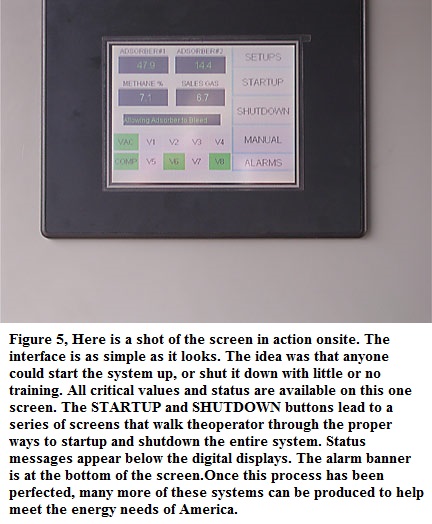 In early summer 2008, EAD installed the system in a refurbished valve building at the site, and flexible conduit was run to junction boxes around the plant. The entire installation of all electrical components took two and a half days. The gas-powered generator was converted from 208 volts to 240 volts. After various challenges, from pressure regulator issues to a lightning strike which destroyed the PLC, now the plant came online. Once up and running, it operates autonomously around the clock. The only human interaction needed is for periodic routine maintenance on the pumps and generator.
In early summer 2008, EAD installed the system in a refurbished valve building at the site, and flexible conduit was run to junction boxes around the plant. The entire installation of all electrical components took two and a half days. The gas-powered generator was converted from 208 volts to 240 volts. After various challenges, from pressure regulator issues to a lightning strike which destroyed the PLC, now the plant came online. Once up and running, it operates autonomously around the clock. The only human interaction needed is for periodic routine maintenance on the pumps and generator.
EAD has worked closely with the oil company to remotely troubleshoot control issues and add upgrades. They used DNloader to download PLC program changes sent to them. They have become adept at using the C-more software to download supplied changes or to make small changes themselves.
For more information, visit: www.eanda-technical.com.
By Glenn Erickson
Expert Automation Design, Inc.
Originally Published: Sept. 1, 2009


